Philodendrons. You’ve seen ’em. Maybe you’ve even killed a few (we’ve all been there). But these aren’t just some generic green blobs – they’re a fascinating, diverse bunch, and understanding them just a little bit makes all the difference.
This guide is about giving you the real facts, the practical stuff, the things you can actually use to keep your Philodendrons happy and thriving. And if you want to start by the begining, learn all about Indoor Plant Basics.
Key Takeaways
- Variety is the Spice of Life: Philodendrons come in hundreds of shapes, sizes, and colors. There’s one for every taste (and light level).
- Jungle Roots: They’re mostly from tropical America, so think warm and humid.
- Climbers Gonna Climb (Mostly): Many are natural climbers, using aerial roots to latch onto things.
- Air-Cleaning Bonus: They do help purify the air, but they’re not magic air filters.
- Not Too Fussy: They’re generally easy-going, but they do need the right light, water, and a bit of TLC.
- Hands (and Paws) Off: They’re toxic if eaten, so keep them away from kids and pets.
1. The Philodendron Family Tree: It’s a Big Family
Think of Philodendron as a massive family reunion. You’ve got your popular cousins (Heartleaf), your quirky aunts (Pink Princess), and a whole bunch of relatives you’ve never even heard of. They’re all part of the Araceae family, which also includes Peace Lilies and Monsteras.

Classification: The Boring (But Important) Details
- Genus: Philodendron (That’s the family name)
- Family: Araceae (The bigger clan)
- Order: Alismatales (Even bigger clan)
The Philodendron classification system is complex, with scientists constantly re-evaluating relationships. The main takeaway? There’s a lot of variation.
Growth Habits: Climbers, Crawlers, and Everything In-Between
- Climbing Philodendrons: These are the vines, the ones that love to scramble up walls and trellises. Think Heartleaf Philodendron – the classic! They’ll put out aerial roots to help them climb.
- Self-Heading Philodendrons: These are more upright and bushy. They don’t climb as much, and often have larger, more dramatic leaves. Philodendron bipinnatifidum (though it’s now officially Thaumatophyllum bipinnatifidum) is a good example.
- Crawling Philodendrons: Some Philodendrons prefer to stay low to the ground, spreading horizontally.
2. Meet the Stars: Popular Philodendron Species
Let’s introduce you to some of the most common (and coolest) Philodendrons:
-
Heartleaf Philodendron (Philodendron hederaceum): The undisputed champion of easy-care houseplants. It’s a climber with heart-shaped, glossy green leaves. Tolerant of low light, but thrives in brighter conditions. It is very often confused with other plant, so in order to make things simple, check this Pothos and Philodendron Differences.
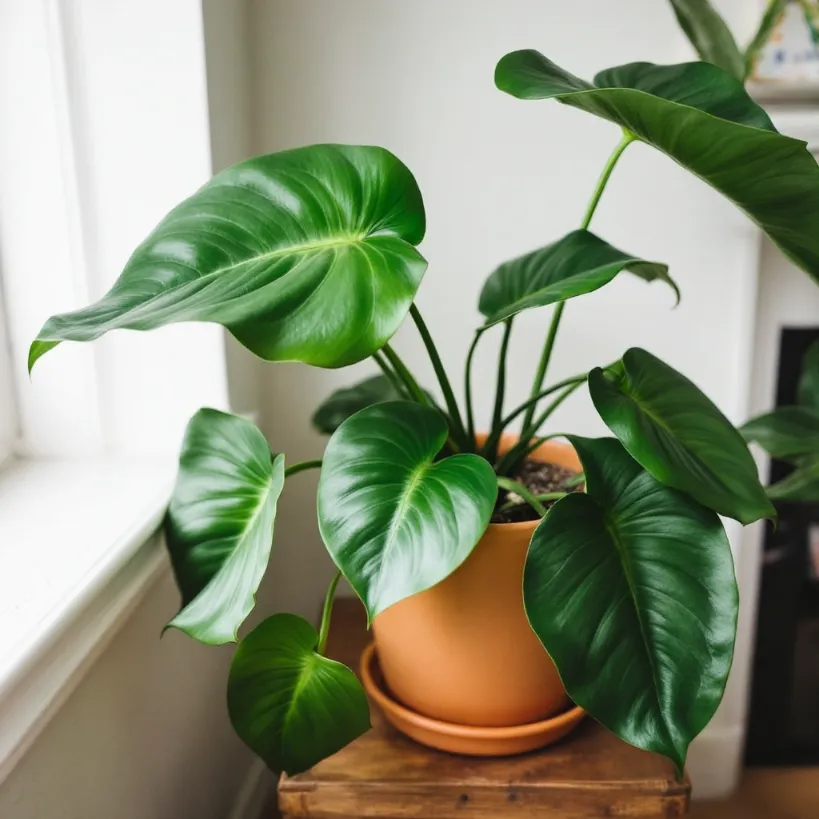
-
Pink Princess Philodendron (Philodendron erubescens ‘Pink Princess’): A social media sensation with its striking pink and green variegation. Needs brighter light to maintain its pink color.
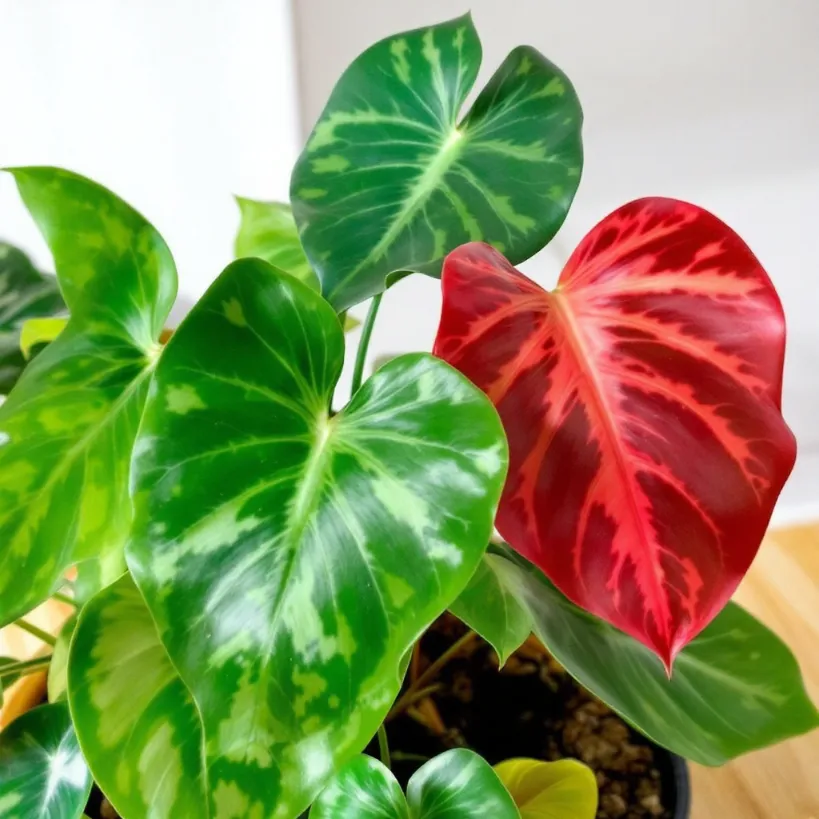
-
Brasil Philodendron (Philodendron hederaceum ‘Brasil’): A variation of the Heartleaf, with splashes of yellow or lime green on its leaves. Care is similar to the standard Heartleaf. If you are interested in growing perfectly this plant, check out Watering Needs of Philodendron Brasil.

-
Moonlight Philodendron (Philodendron ‘Moonlight’): A hybrid with bright, chartreuse-yellow leaves. It’s a self-heading type, so it grows upright.
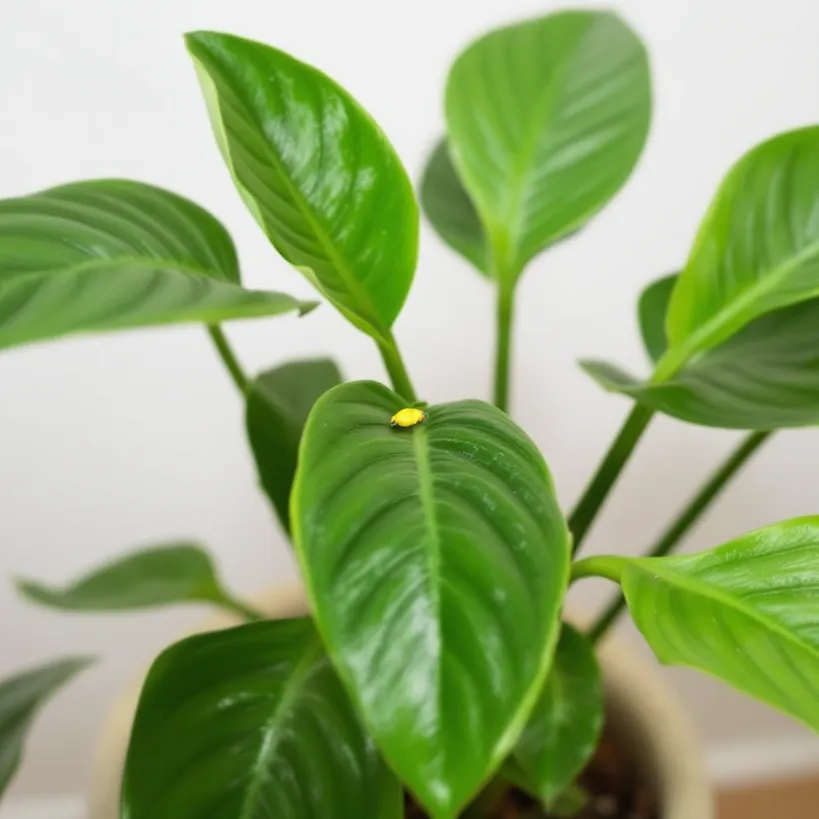
-
Split-Leaf Philodendron (Monstera deliciosa): Not technically a Philodendron, but often mistaken for one. It’s a close relative with large, deeply lobed leaves (hence the “split-leaf” name).
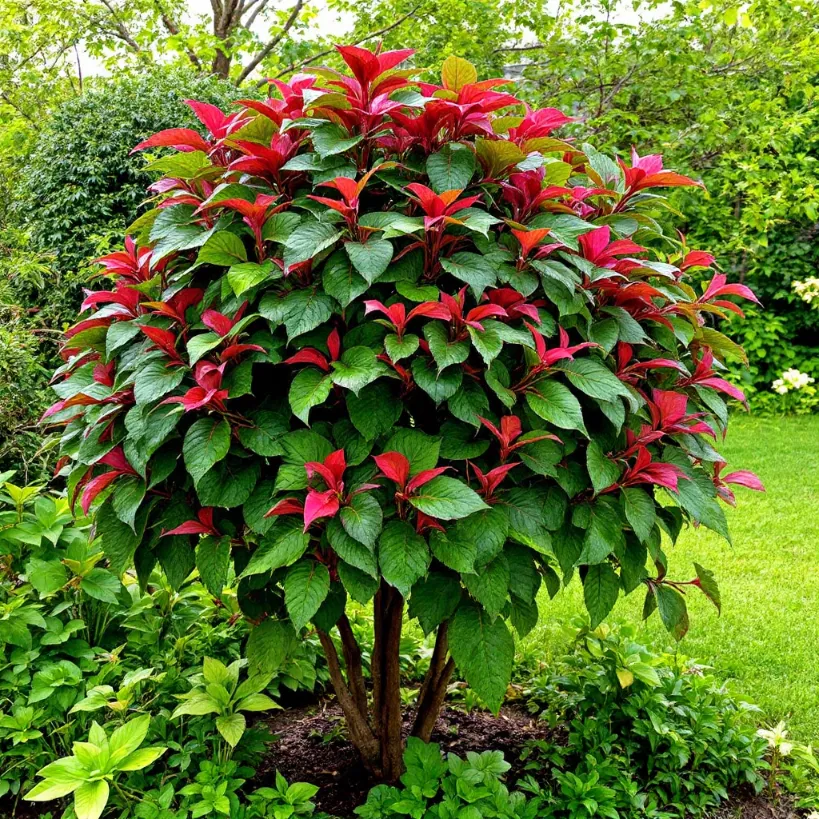
-
Philodendron Birkin (Philodendron ‘Birkin’): A more compact variety with striking white pinstripes on its dark green leaves. To keep it as beautiful as it should be, read more about Philodendron Birkin Care.
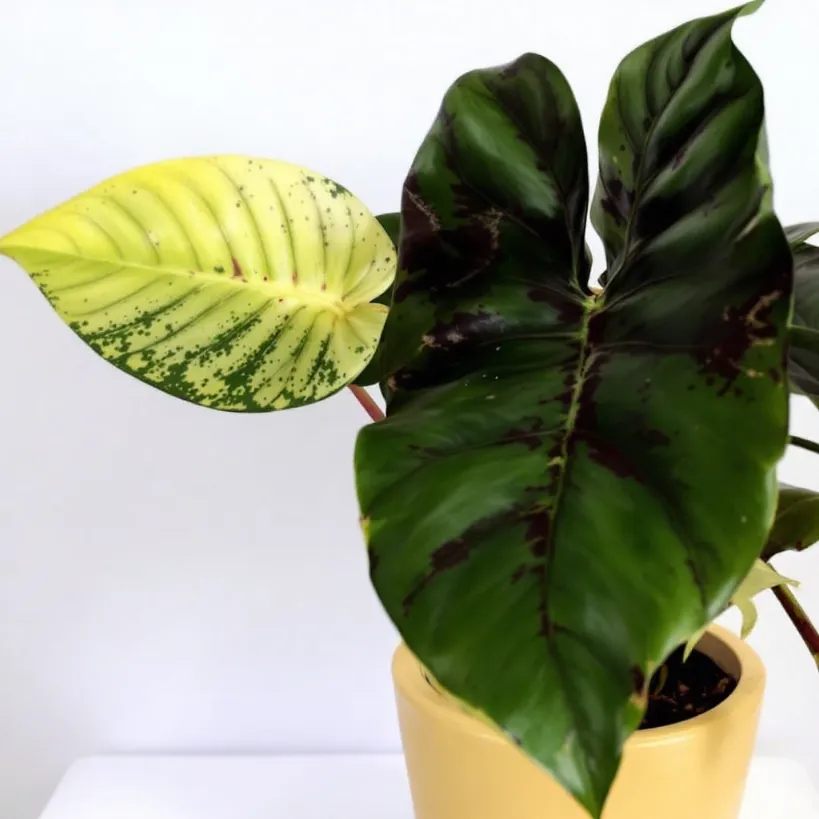
-
Philodendron Micans (Philodendron hederaceum var. hederaceum) It has velvety, heart-shaped leaves that can appear dark green or even a deep purple, depending on the light

Common Names: A Source of Confusion
Philodendrons have tons of common names: Heartleaf, Sweetheart Plant, Spadeleaf… It’s easy to get mixed up. Always check the scientific name (the Philodendron scientific names) to be 100% sure you know what you’re dealing with.
3. The Life of a Philodendron: From Baby to Boss
Philodendrons, like all living things, have a life cycle. Understanding it helps you care for them better.
- From Seed or Cutting: They usually start as tiny seedlings or cuttings (pieces of a parent plant).
- The Climb (or Crawl): Climbers will immediately start looking for something to latch onto – a moss pole, a trellis, your curtains (if you let them!). They use aerial roots to grip and absorb moisture.
- Growth Spurts: Philodendron growth rate varies a lot. Some, like the Heartleaf, are surprisingly fast growers, especially in good conditions. Others are much slower.
- Size Matters: Philodendron size can range from tiny, desk-friendly plants to massive jungle giants (in their natural habitat, of course).
- Leaf Shapes and Colors: Philodendron shape is incredibly diverse. You’ve got heart-shaped leaves, arrow-shaped leaves, deeply lobed leaves, and even leaves with holes (like Monstera). Philodendron color is usually some shade of green, but variegation (patterns of different colors) is common. Philodendron texture can be smooth, velvety, or even slightly rough.
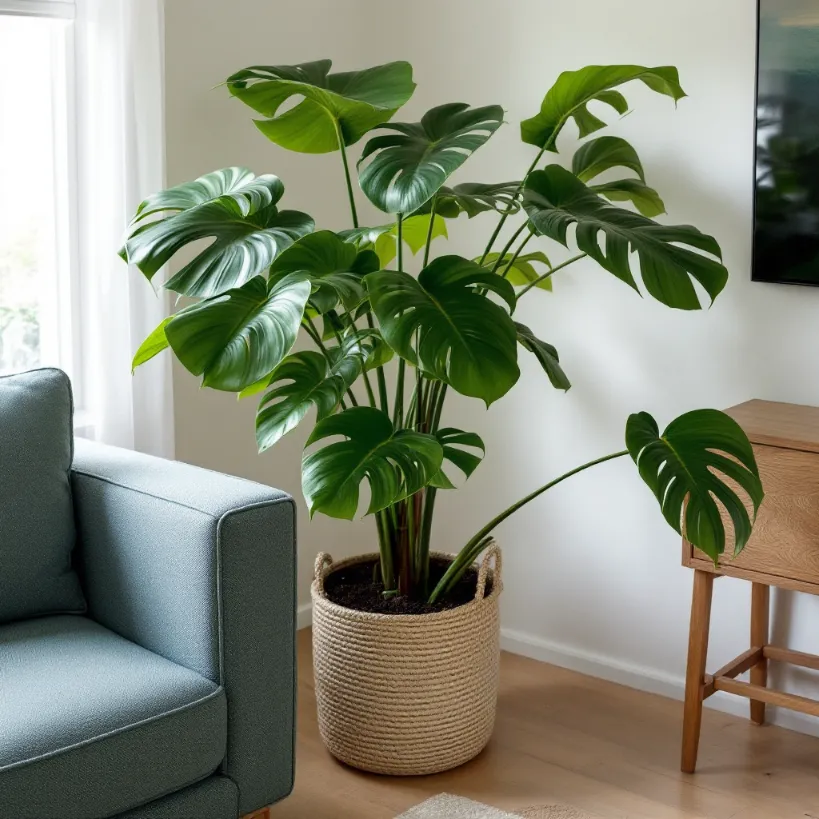
4. Philodendron Care: The Non-Negotiables
Okay, let’s get down to brass tacks. Here’s how to keep your Philodendron happy:
- Light: Bright, indirect light is the gold standard. Think near a window, but not in direct sunbeams (which can burn the leaves). Some can tolerate lower light, but they won’t grow as vigorously.
- Water: This is where most people mess up. Water when the top inch or so of soil feels dry. Stick your finger in to check. Don’t let the plant sit in soggy soil – that leads to root rot.
- Soil: A well-draining potting mix is essential. Look for mixes specifically designed for aroids (the plant family Philodendrons belong to), or make your own with ingredients like perlite, orchid bark, and coco coir. Do you want to know more about it, check Philodendron Soil Mix.
- Humidity: These are tropical plants – they love humidity! If your air is dry (especially in winter), consider using a humidifier, placing the plant on a pebble tray filled with water, or grouping it with other plants.
- Temperature: Average room temperatures (65-80°F / 18-27°C) are perfect. Avoid cold drafts or placing them near heating vents.
- Fertilizer: Feed them during the growing season (spring and summer) with a balanced, liquid fertilizer diluted to half strength. Don’t fertilize in fall or winter when growth slows down.
- Prunning: Philodendrons are easy to prunne, and if you want to learn all about it, check this Pruning and Shaping Philodendron Plants.

Pro Tip: Rotate your Philodendron regularly to ensure even growth. Otherwise, it might start leaning towards the light source.
Troubleshooting Common Problems
- Yellowing Leaves: Usually a sign of overwatering, but can also be caused by underwatering, nutrient deficiencies, or pests.
- Brown Leaf Tips: Often a sign of low humidity or inconsistent watering.
- Leggy Growth: The plant is stretching for light. Move it to a brighter spot.
- Drooping Leaves: Could be underwatering, overwatering, or temperature stress. Check the soil moisture and make sure the plant isn’t in a draft.
- Pests: Common culprits include mealybugs, spider mites, aphids, and scale. Inspect your plant regularly and treat any infestations promptly.
5. Propagation: Making More Philodendrons (It’s Easy!)
One of the best things about Philodendrons is how easy they are to propagate. You can create new plants from cuttings, essentially cloning the parent plant.
-
Stem Cuttings: The most common method. Here’s how:
- Choose a healthy stem with at least 2-3 nodes (the bumps where leaves grow).
- Use clean, sharp scissors or pruning shears to make a cut just below a node.
- Remove any leaves that would be submerged in water (if propagating in water) or buried in soil.
- Place the cutting in water or directly into a moist potting mix.
- Keep the cutting in a warm, bright location (out of direct sun).
- If using water, change the water every few days.
- Roots should start to develop within a few weeks. Once the roots are a few inches long, you can pot up the cutting in soil (if it was in water).
-
Air Layering: A good method for larger, vining Philodendrons. You encourage roots to grow on a stem while it’s still attached to the parent plant.
Philodendron propagation needs are simple: warmth, moisture, and a bit of patience. It’s a great way to expand your collection or share your plants with friends. Check the Philodendron Propagation Methods.
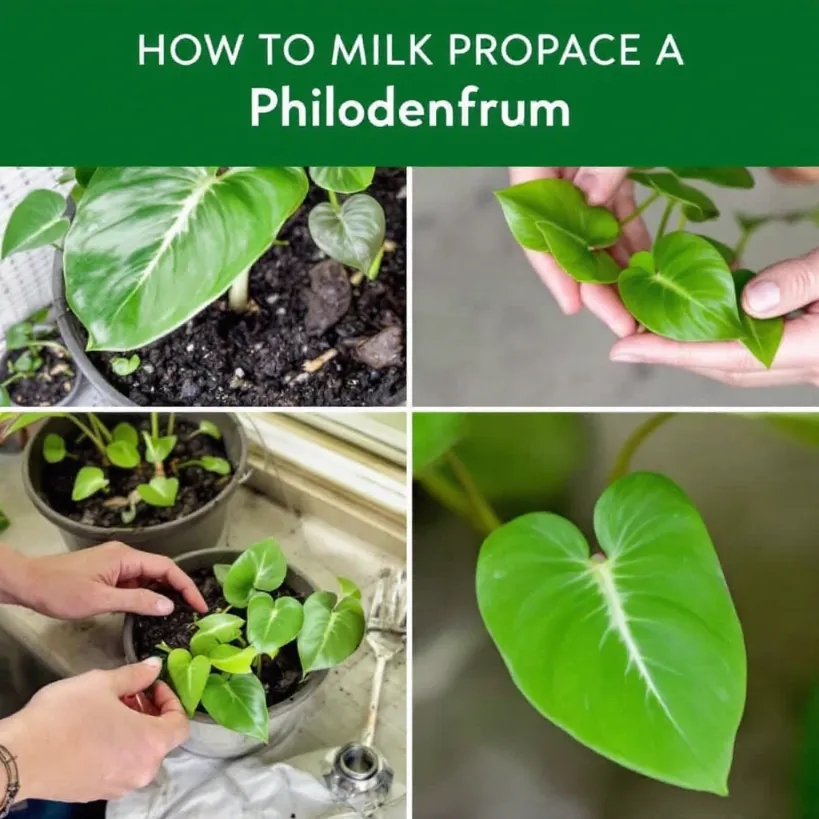
6. Beyond Beauty: Uses and Benefits
Philodendrons aren’t just pretty faces; they have other benefits too:
- Air Purification: They’re on NASA’s list of air-purifying plants, helping to remove some common indoor pollutants (like formaldehyde and benzene). Don’t expect miracles, but every little bit helps.
- Mood Boosters: Studies have shown that being around plants can reduce stress and improve mood.
- Aesthetic Appeal: Let’s face it, they just look good. They add a touch of the tropics to any space.
- Traditional Uses: Some Philodendron species have been used in traditional medicine and for making crafts (like ropes and baskets) in their native regions.
7. History, Folklore, and Symbolism
Philodendrons have a rich history, intertwined with the cultures of the tropical Americas:
- Indigenous Uses: Native peoples have used Philodendrons for centuries for various purposes, including medicine, fiber, and even poison.
- “Tree Lover”: The name Philodendron comes from the Greek words “philo” (love) and “dendron” (tree), referring to the climbing habit of many species.
- Symbolism: They often symbolize growth, abundance, love of nature, and health.

8. Toxicity Alert!
This is crucial: All parts of Philodendron plants are toxic to humans and animals if ingested. They contain calcium oxalate crystals, which can cause:
- Oral irritation
- Swelling of the mouth, tongue, and throat
- Difficulty swallowing
- Vomiting
- Drooling (in pets)
Keep Philodendrons out of reach of children and pets. If you suspect ingestion, contact a doctor or veterinarian immediately.
9. Philodendrons and the Environment
- Indoor Air Quality: As mentioned, they can help improve indoor air quality (to a limited extent).
- Invasive Potential: In some tropical regions where they’re not native, Philodendrons can become invasive, outcompeting native plants. It’s important to grow them responsibly.
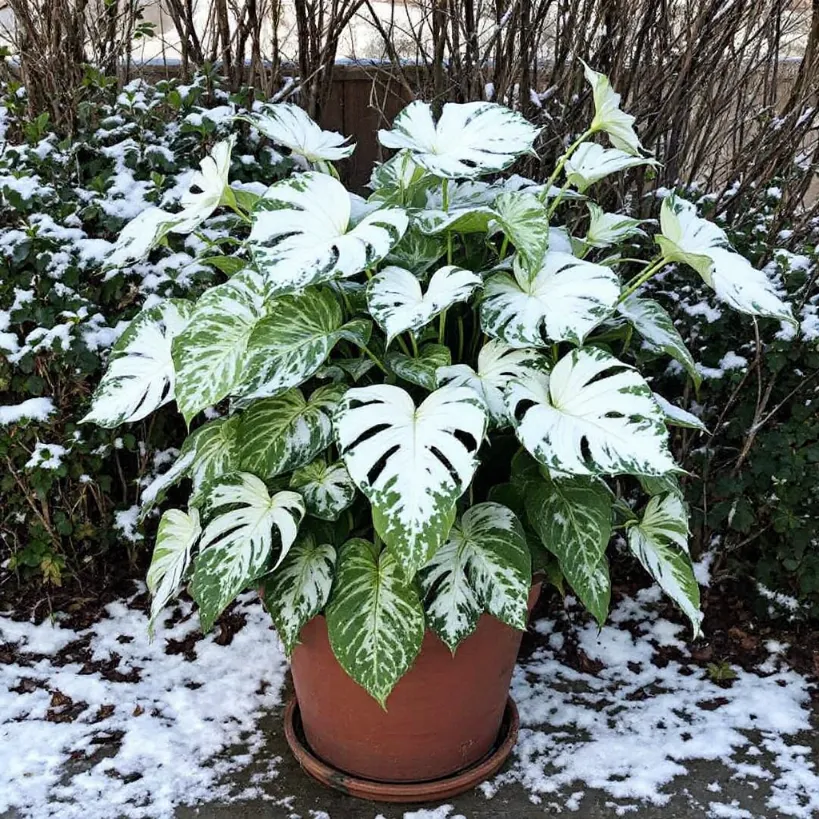
10. Fun Facts and Scientific Research
- Leaf Shape Shifters: Some Philodendrons change leaf shape dramatically as they mature. A young plant might have simple, heart-shaped leaves, while a mature plant of the same species might have large, deeply lobed leaves.
- Ant Friends: Some species have special glands (called extrafloral nectaries) that secrete nectar to attract ants. The ants, in turn, protect the plant from herbivores.
- Ongoing Research: Scientists are still studying Philodendrons to learn more about their diversity, evolution, and potential uses. There are many aspects to learn about this amazing plant, and for that you can always read about Fascinating Facts About Philodendron Plants.
The Final Word: Embrace the Philodendron!
Philodendrons are rewarding, relatively easy-to-care-for plants that offer a huge range of options for any plant lover. Don’t be intimidated – with a little knowledge and the right approach, you can enjoy these tropical beauties in your home for years to come.
References
[1] https://www.gardenia.net/genus/philodendron
[2] https://www.ambius.com/resources/blog/plant-profile/philodendron-plant-care
[3] https://www.epicgardening.com/philodendron-varieties/
[4] https://www.masterclass.com/articles/philodendron-care
[5] https://www.patchplants.com/pages/plant-care/complete-guide-to-philodendron-care/
[6] https://softschools.com/facts/plants/philodendron_facts/1976/
[7] https://greenka.uk/philodendron-care
[8] https://www.thejoyofplants.co.uk/philodendron
[9] https://plnts.com/en/care/houseplants-family/philodendron
[10] https://www.britannica.com/plant/Philodendron
[11] https://www.fnp.com/article/know-more-about-philodendron-plants
[12] https://www.hortygirl.com/green-living/philodendron-plant-fun-facts-and-living-decor-ideas/
[13] https://coollectiveplants.com/blogs/news/journey-into-the-world-of-philodendron-plants